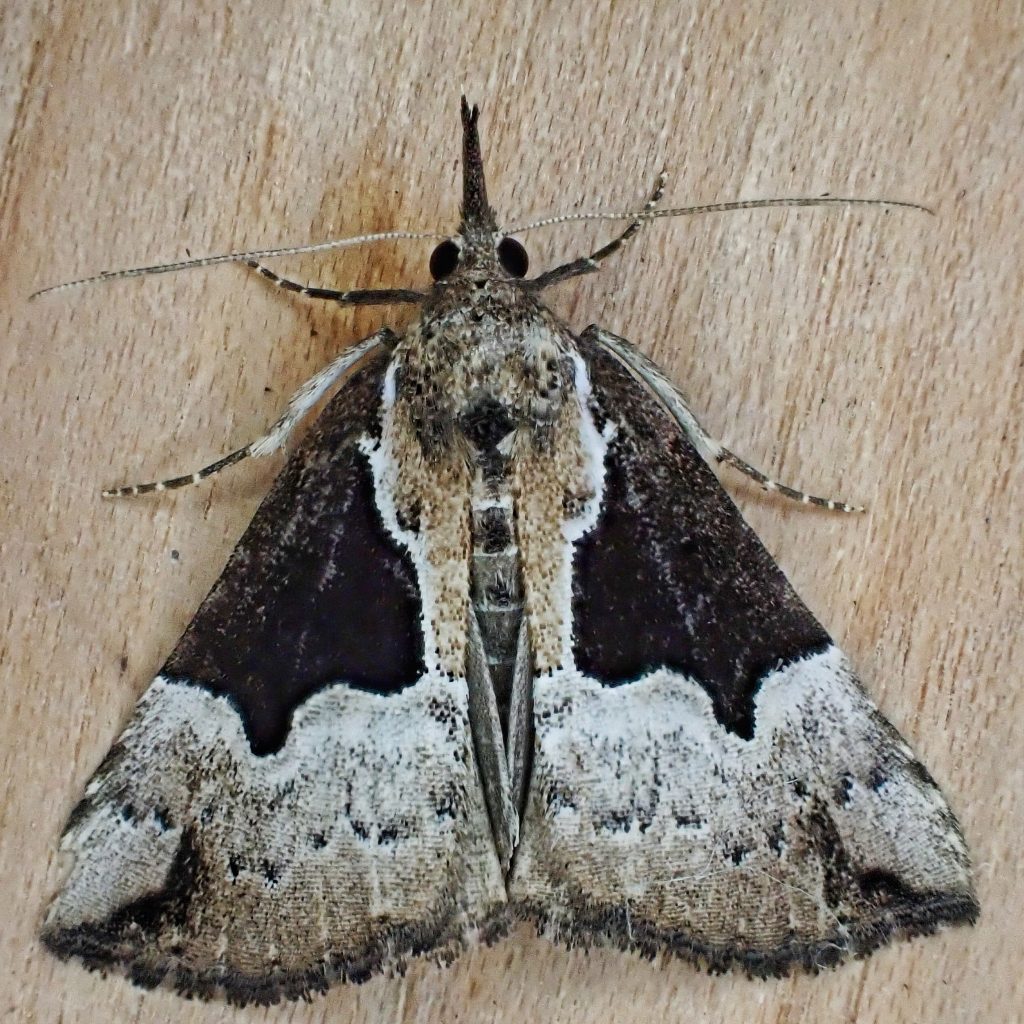
Oddly, since it is apparently quite a common moth, and its primary larval host of Cornus sericea (red-osier dogwood) is also a frequent resident of areas where I bug light for moths, this is the first Hypena bijugalis (dimorphic bomolocha moth) that I’ve ever seen, and there was only the one that visited my lights when I went a’mothing up at Canyon Creek last Tuesday. Although it is possible that there have been others and I didn’t get a photo of them. In my experience Hypena are flighty moths, and take awhile to settle down, so one may have visited my lights before, and I spooked it off. This guy (I know it’s a male because of the dark, basal forewing marking) also took his time calming down, but fortunately I had many other moths to occupy my attention.
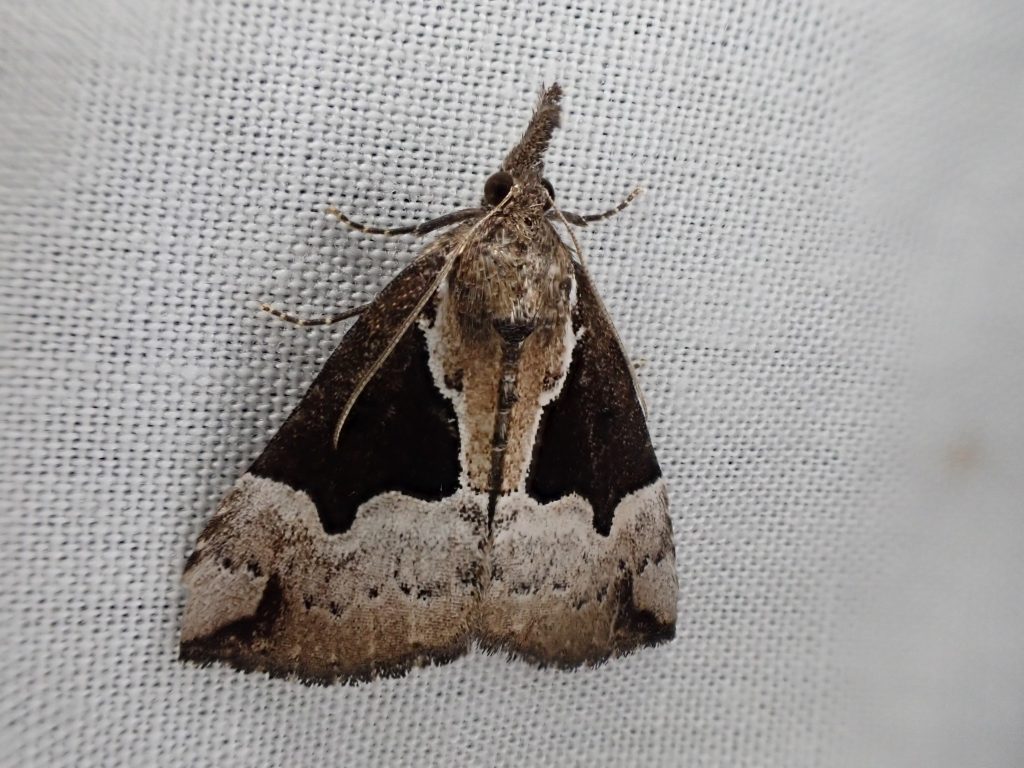
Description– “Hypena bijugalis is strongly sexually dimorphic with very different-appearing males and females. It is a small moth (FW length 13 – 15 mm) with triangular forewings in both sexes, with males slightly larger than females. The males have dull, dark brown forewings marked with pale fragments of the transverse lines, spots at the base of the fringe, and a pale patch at the posterior margin lateral to the postmedial line. Those of females have smooth dark brown medial to the postmedial line and pale gray lateral to this line. The latter area is nearly white near the postmedial line, darkest at the margin, and blue-gray at the apex. The margin posterior to the brown is golden brown, bounded by a segment of the antemedial line. The unusually-shaped pale antemedial lineruns parallel to the posterior margin and fused to the postmedial line near the edge of the wing. The postmedial line is very smooth, drawn laterally to a tooth-like projection at the lower edge of the cell. The subterminal line is pale with a series of gray to black spots proximal to it. A jagged black mark borders the blue-gray patch at the apex. The hindwing is dark gray-brown in the male and slightly lighter in the female. The palpi are very long. The male antenna is ciliate and that of the female is simple.” PNW Moths | Hypena bijugalis
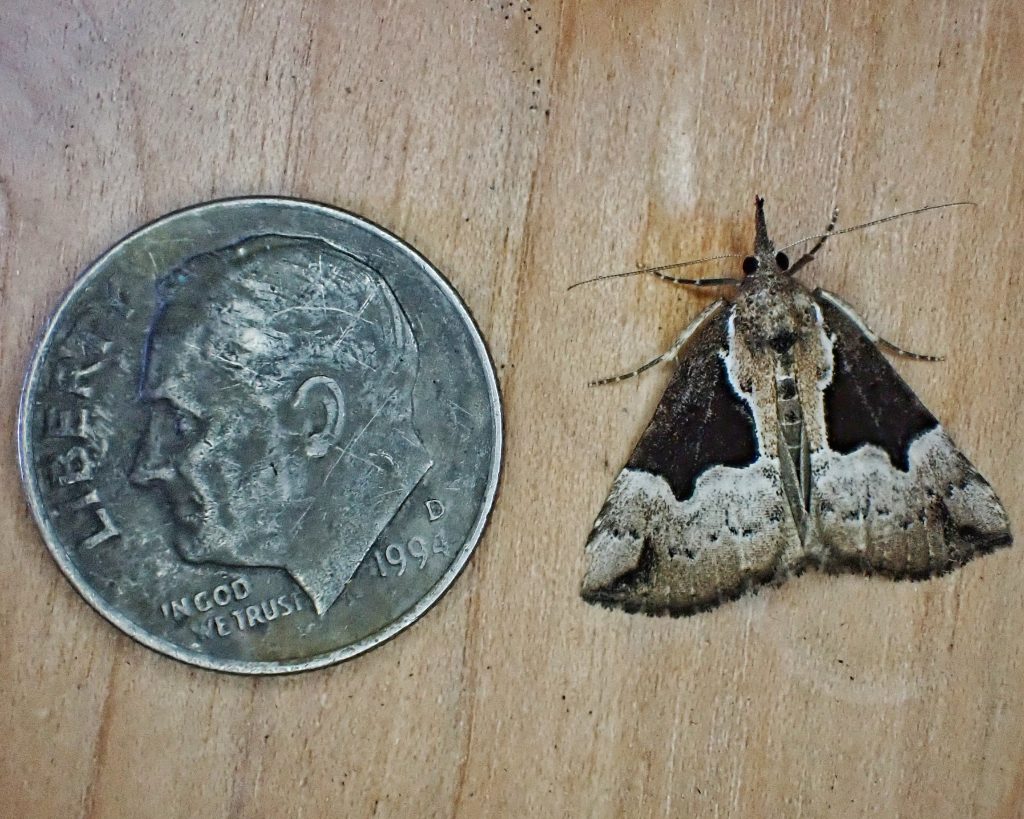
Similar species– “Both sexes of this species can be readily identified. The males are the only species with triangular brown wings bearing a pale patch along the posterior margin. Females are the only species with a smooth, brown wing base bordered by a smooth postmedial line with single lateral projection contrasting with a whitish gray distal wing.” PNW Moths | Hypena bijugalis
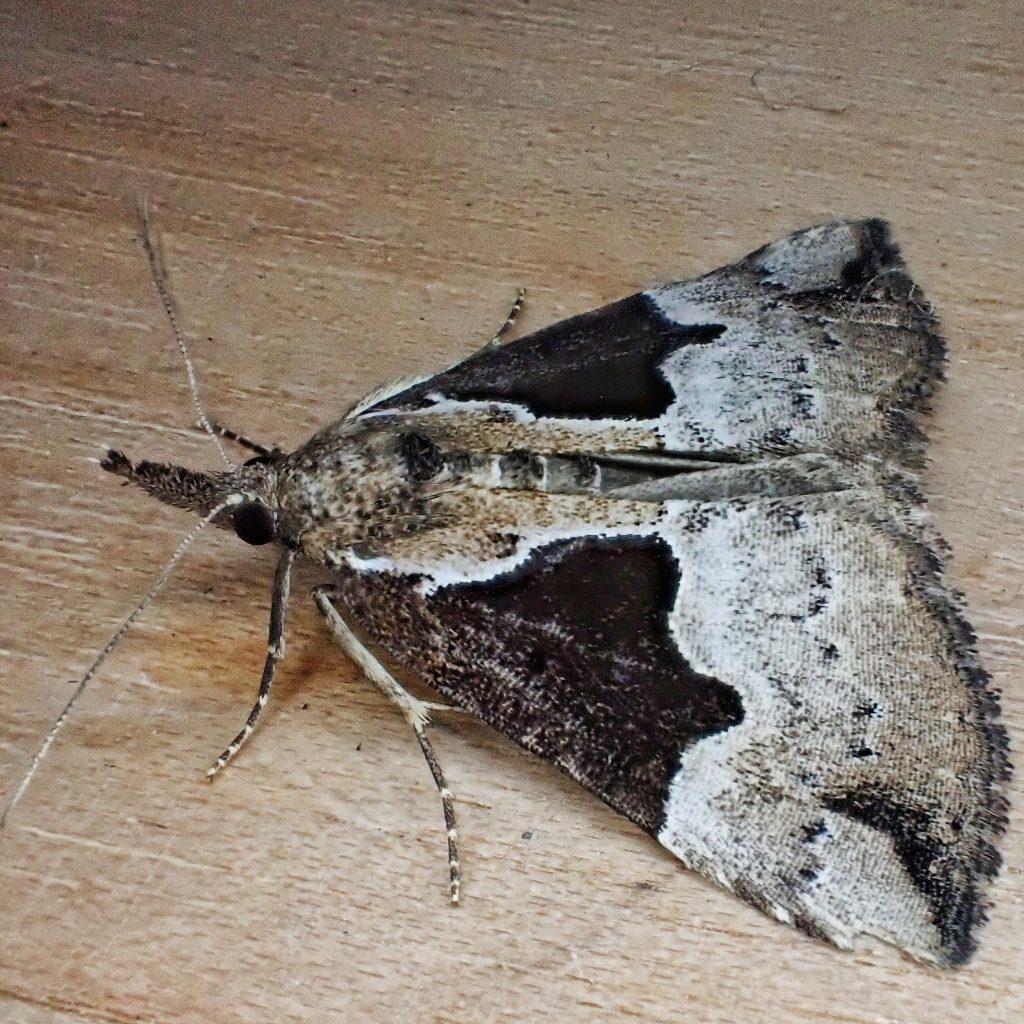
Habitat– “This species is common and widely distributed in moist forest habitats throughout North America. It is particularly common in mixed hardwood-conifer forests at low elevations west of the Cascades.” PNW Moths | Hypena bijugalis
Range– “It is found in North America from Nova Scotia across southern Canada to Vancouver Island, south over the whole United States to Florida.” https://en.wikipedia.org/wiki/Hypena_bijugalis ; more common west of the Cascades and in sw Oregon/nw California in our region, but also found in other forested areas throughout the PNW.
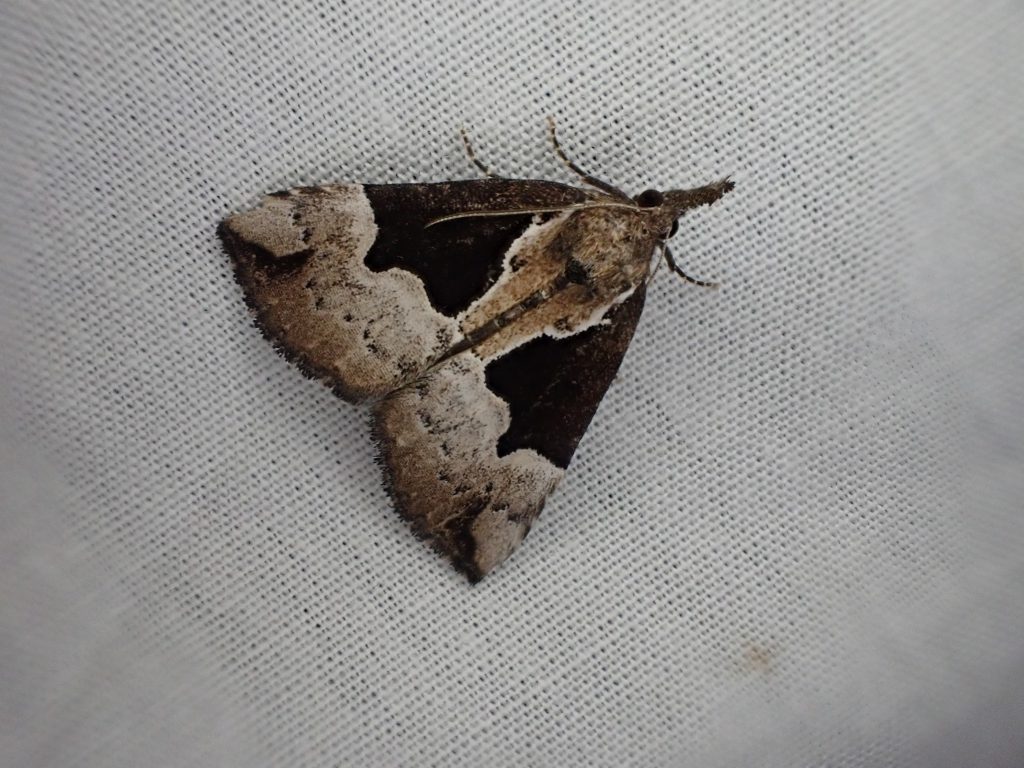
Eats– The larvae of this species “…feeds on hardwoods such as dogwoods (Cornus spp.) in the Cornaceae.” PNW Moths | Hypena bijugalis ; in our region the larvae probably feed primarily on Cornus sericea (red-osier dogwood) and C. nuttallii (Pacific dogwood)
Eaten by– Presumably any insectivore that can catch and subdue them.
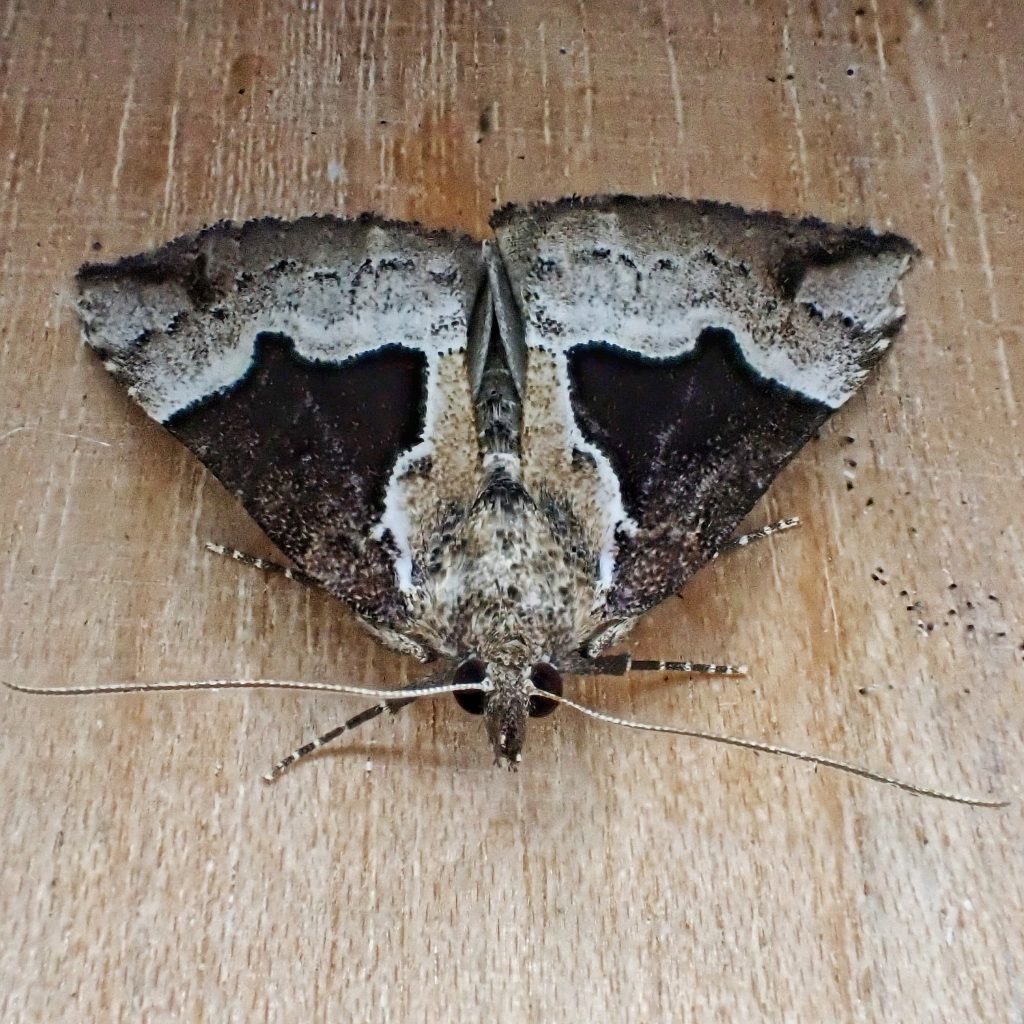
Adults active– “Pacific Northwest records are from June, July, and August.” PNW Moths | Hypena bijugalis
Life cycle– I can find nothing to confirm this, but based on the timing for adults flying I would guess this species overwinters either as a pupa in diapause, or as a late instar larva in diapause.
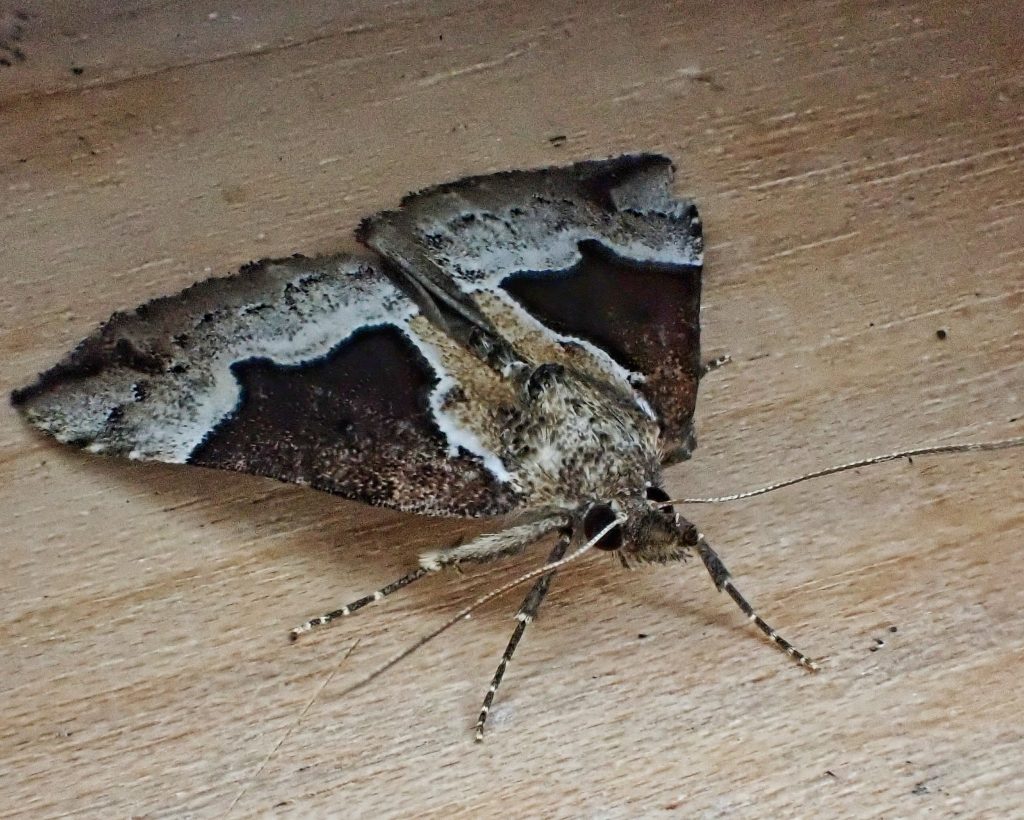
Etymology of names– Hypena is from the Greek for ‘moustache’, and refers to the projecting palpi. The specific epithet bijugalis is from the Latin for ‘two yokes’, and my guess is that that refers to the shape of the large brown areas on the basal half of each dorsal forewing, but I cannot verify that. The common name bomolocha refers to the fact that “In the theatre of ancient Greece, the bômolochus (Ancient Greek: βωμολόχος) was one of three stock characters in comedy, corresponding to the English buffoon.[1] The bômolochus is marked by his wit, his crudity of language, and his frequent non-illusory audience address.” https://en.wikipedia.org/wiki/Bomolochus . This was also formerly the name of this genus.
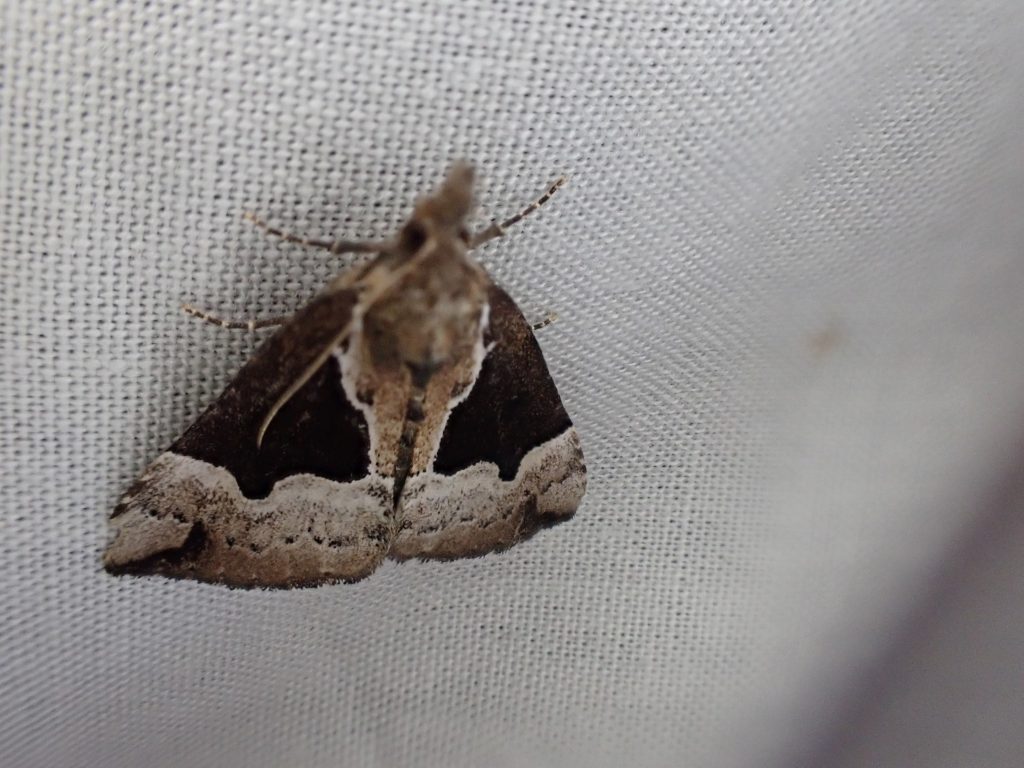
Species Hypena bijugalis – Dimorphic Hypena – Hodges#8443 – BugGuide.Net
https://en.wikipedia.org/wiki/Hypena_bijugalis
http://mothphotographersgroup.msstate.edu/species.php?hodges=8443
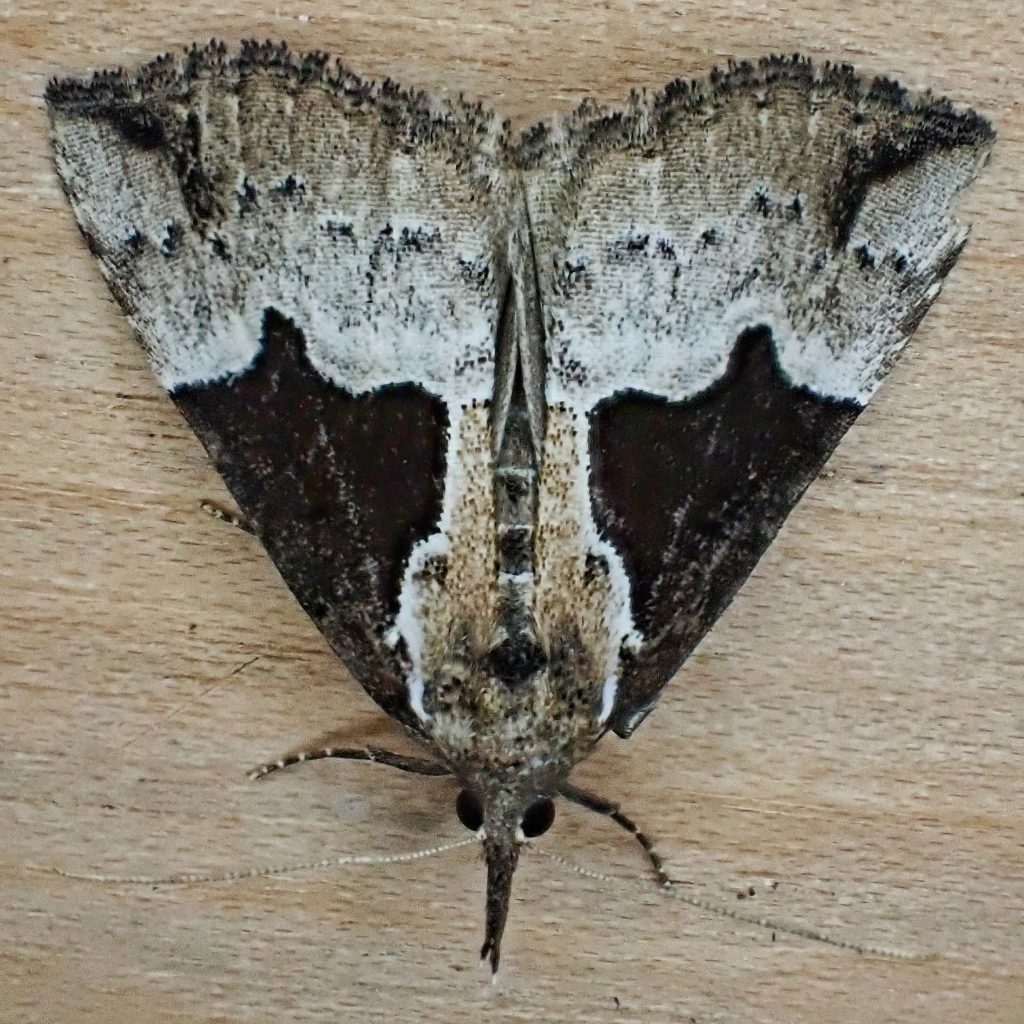
Interesting articles on the different moths. Enjoyed the reading and pictures. The the silk moth i had never seen. Hope to see more. Thanks
Thanks for your appreciation, Maria!